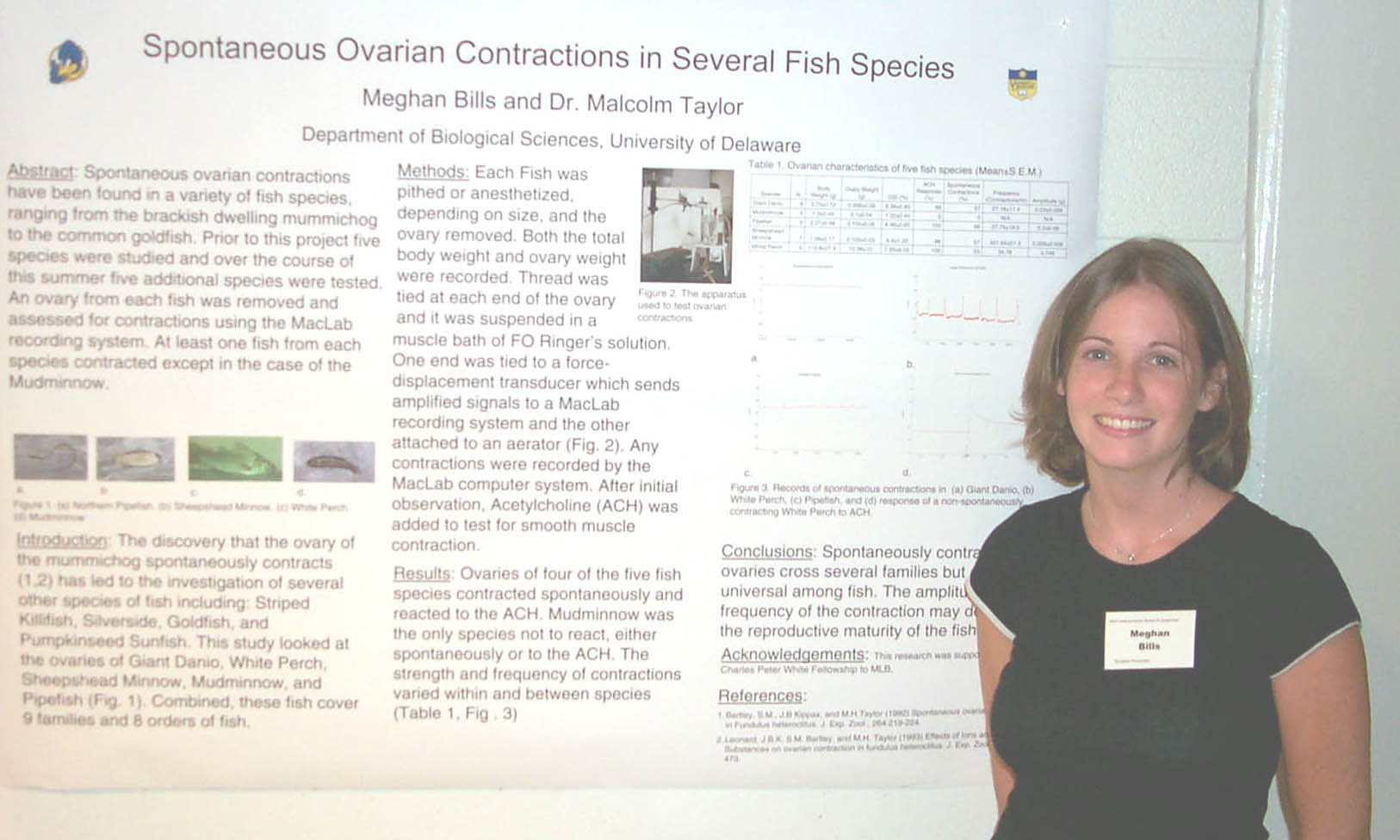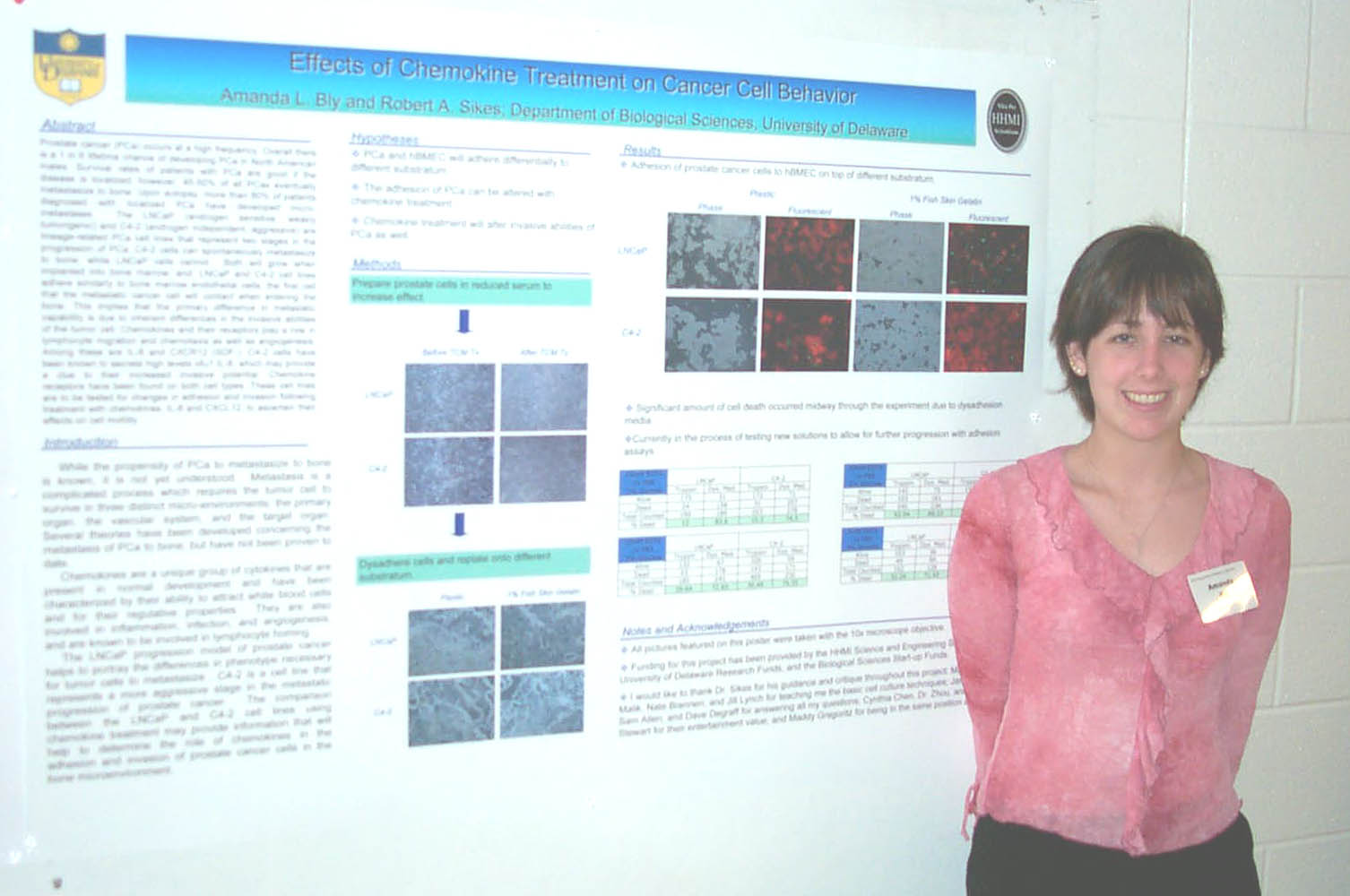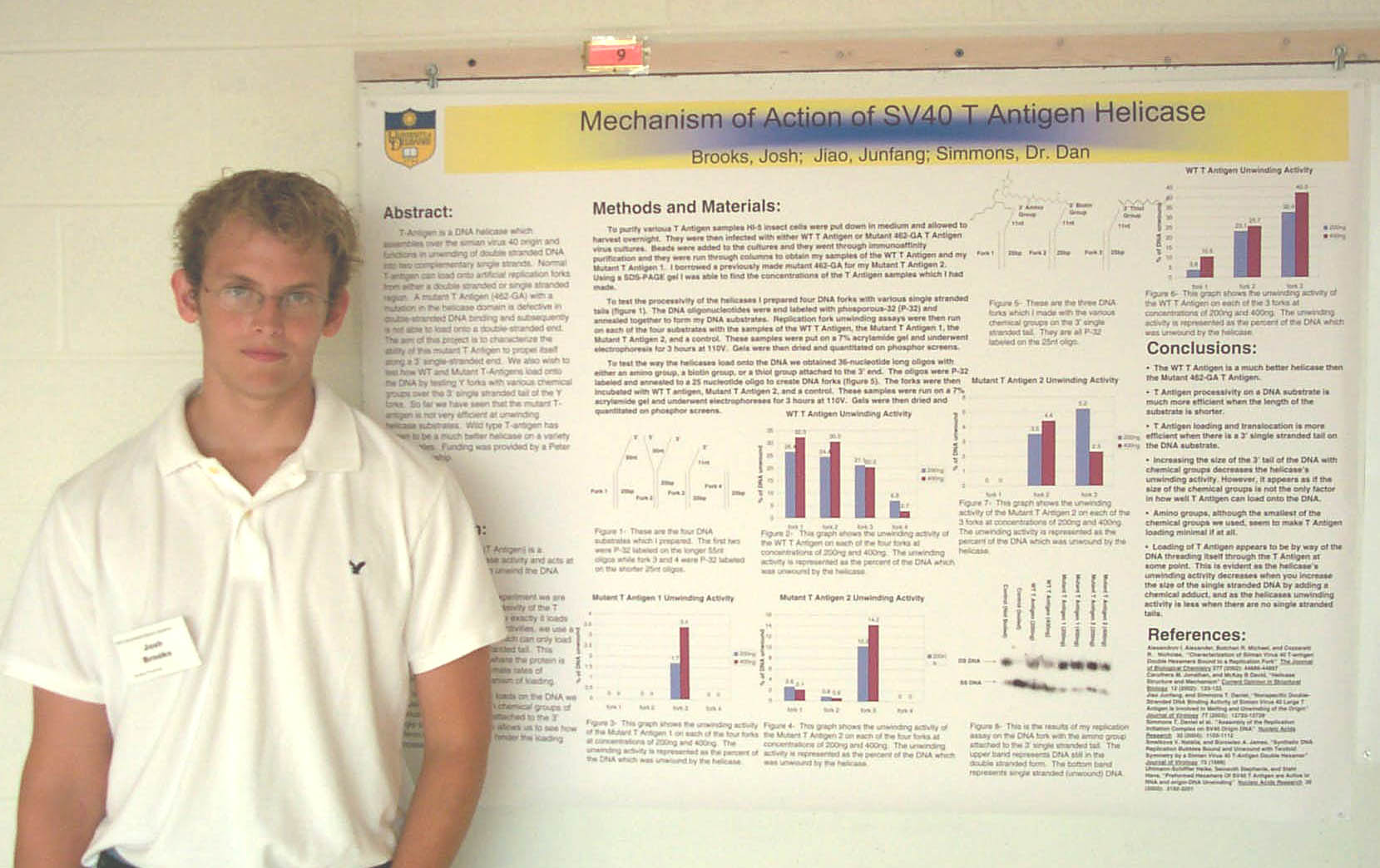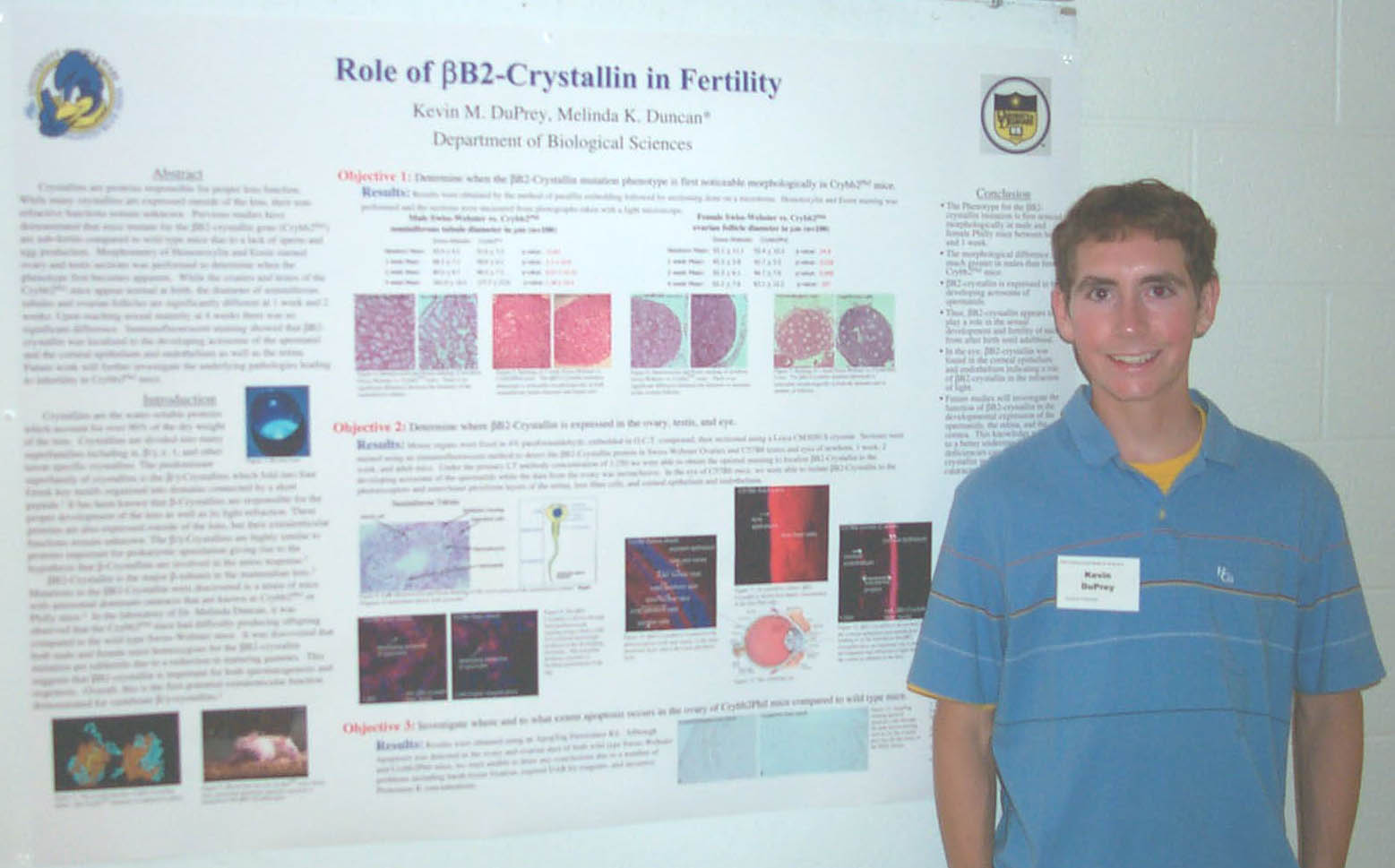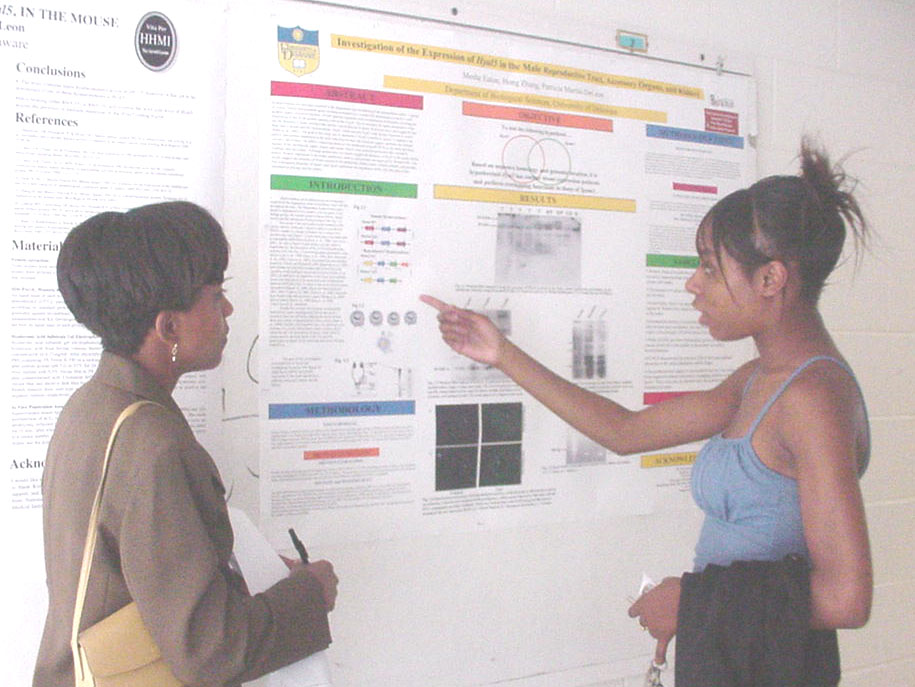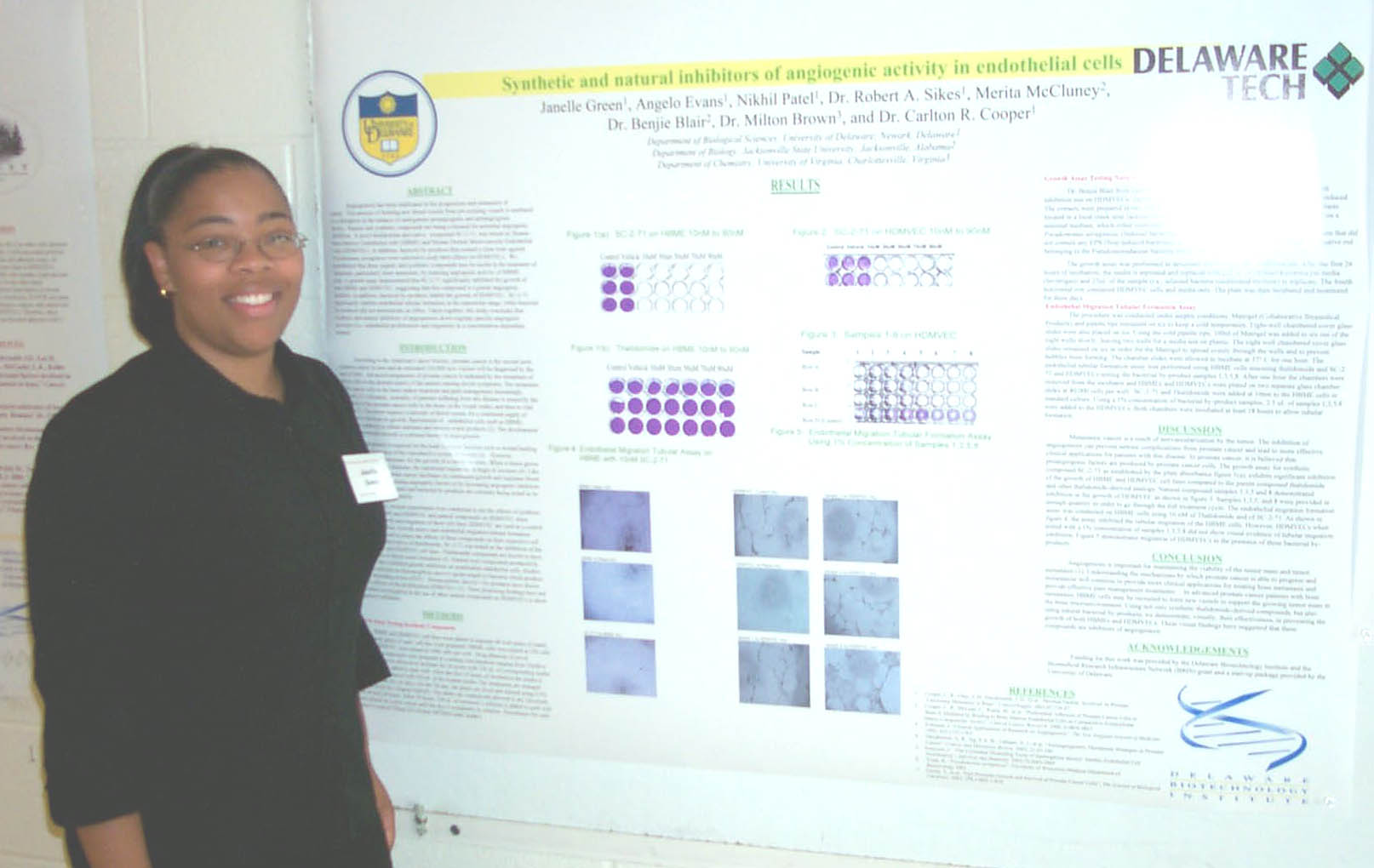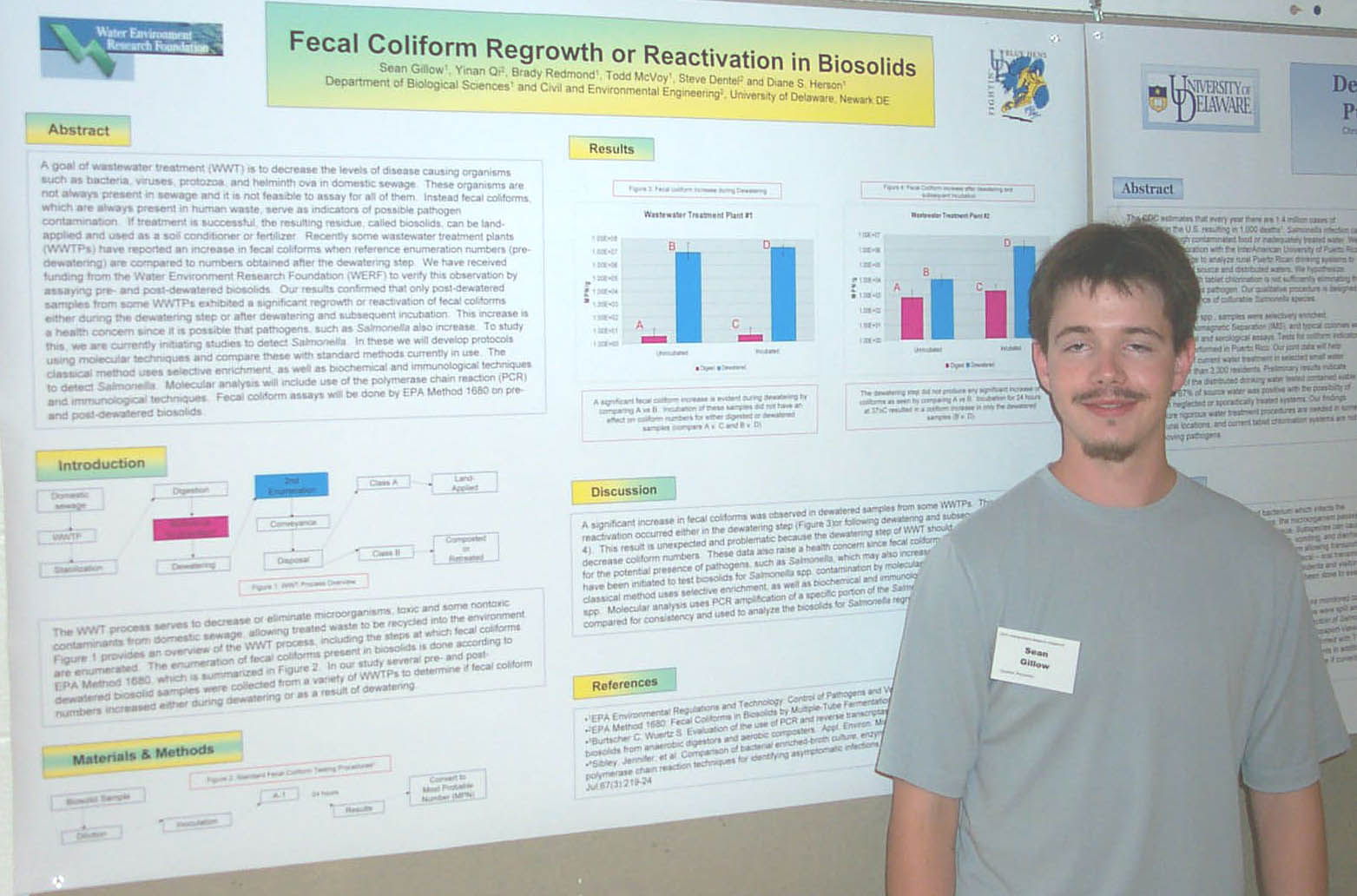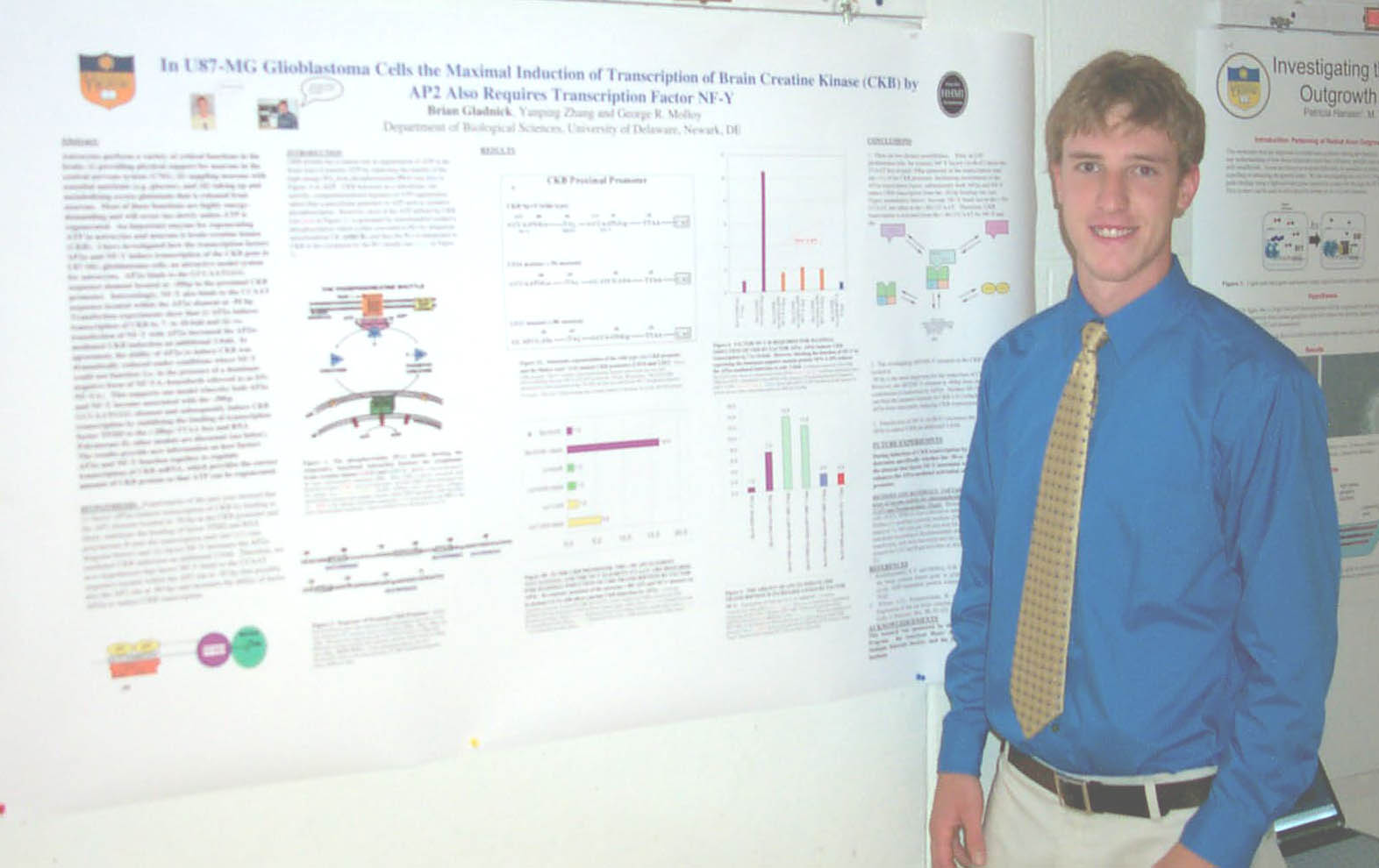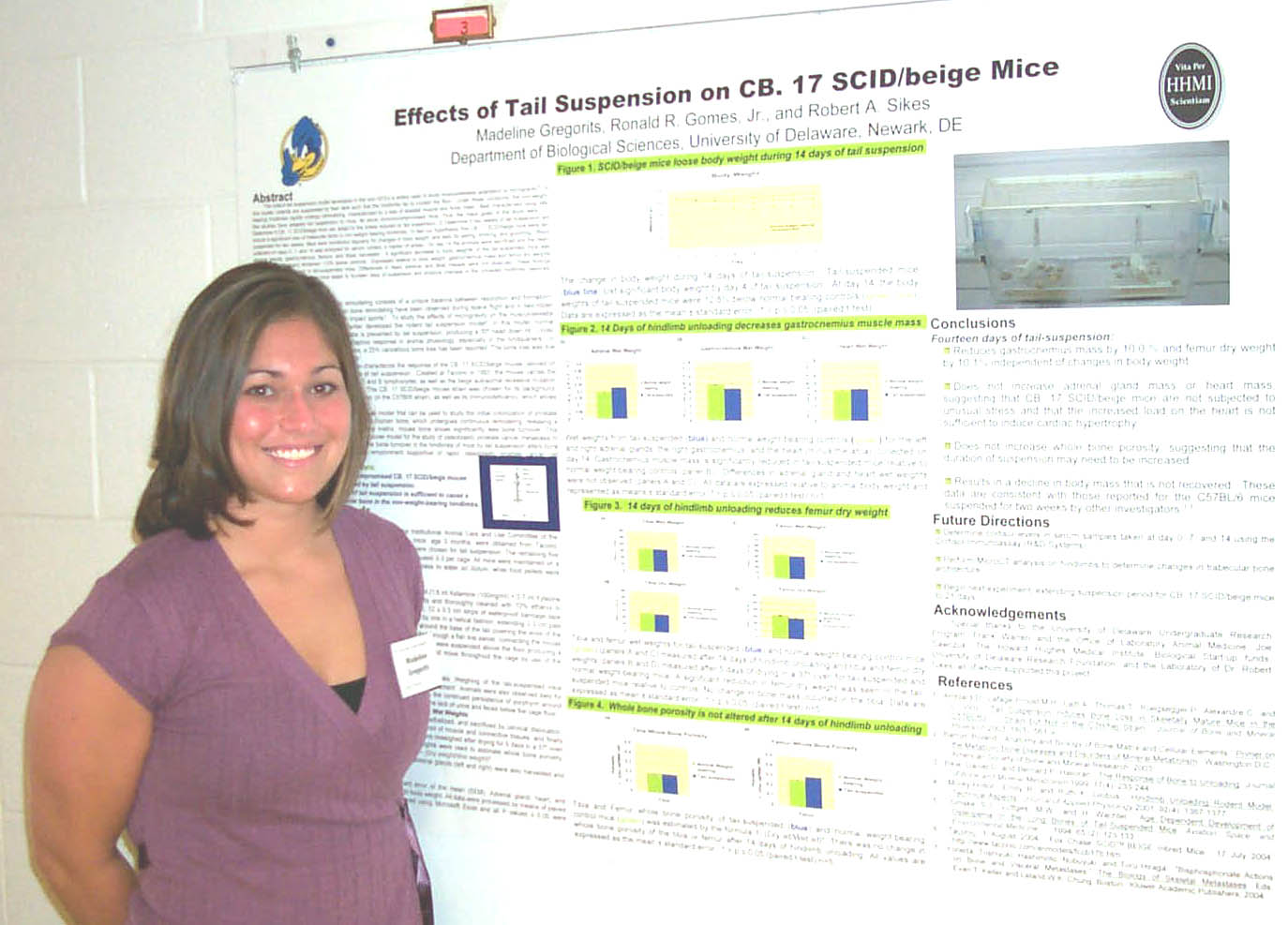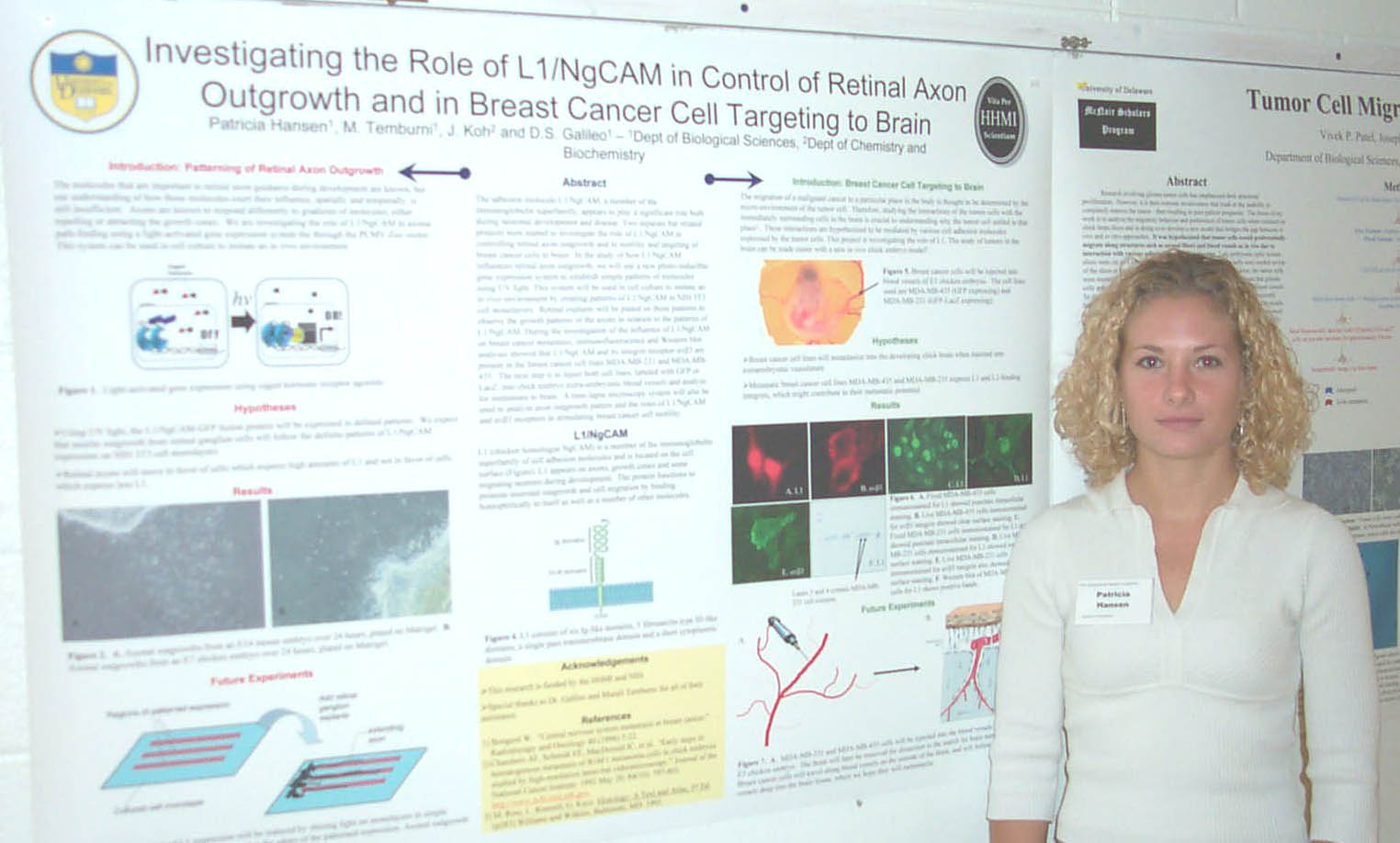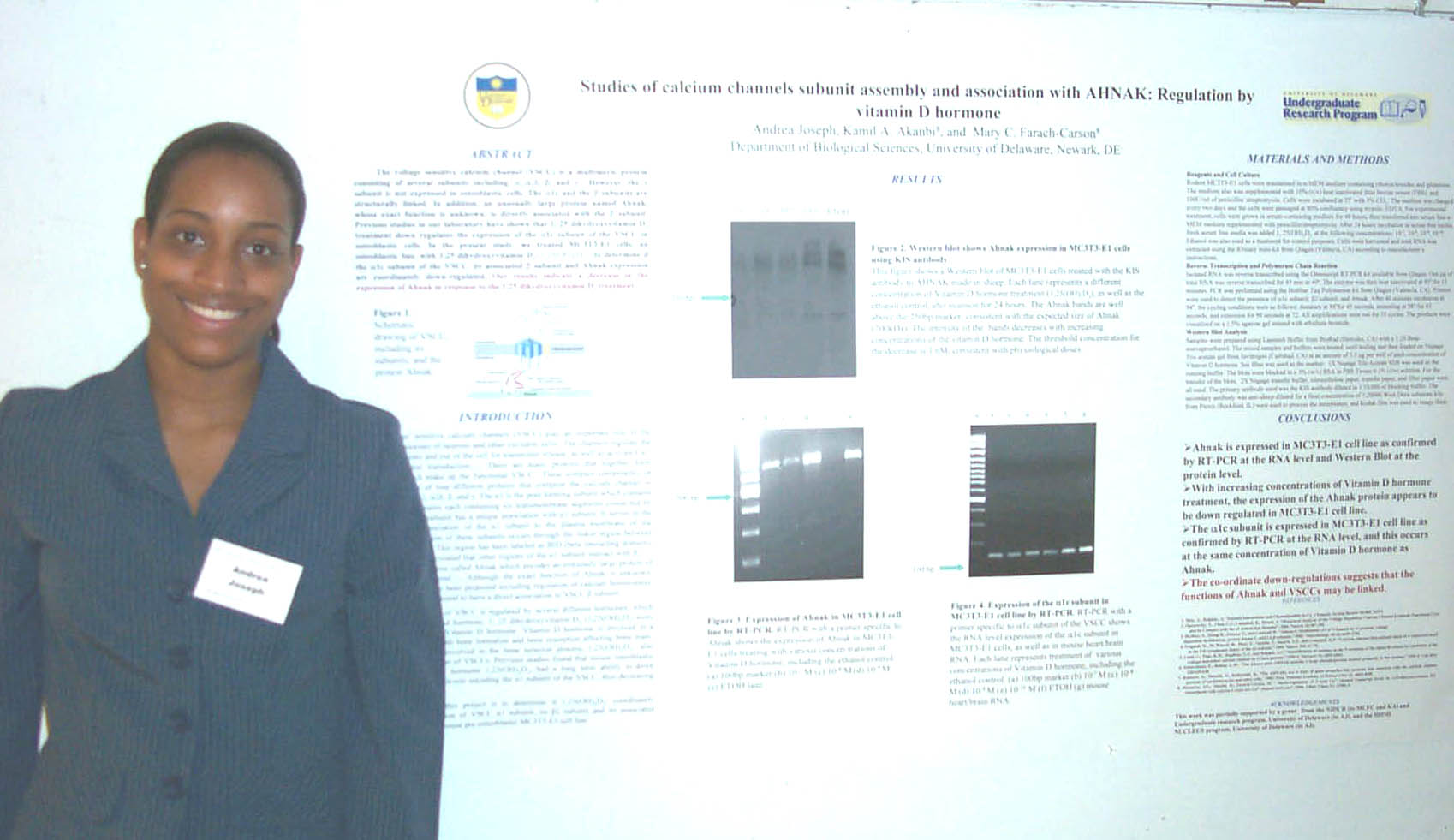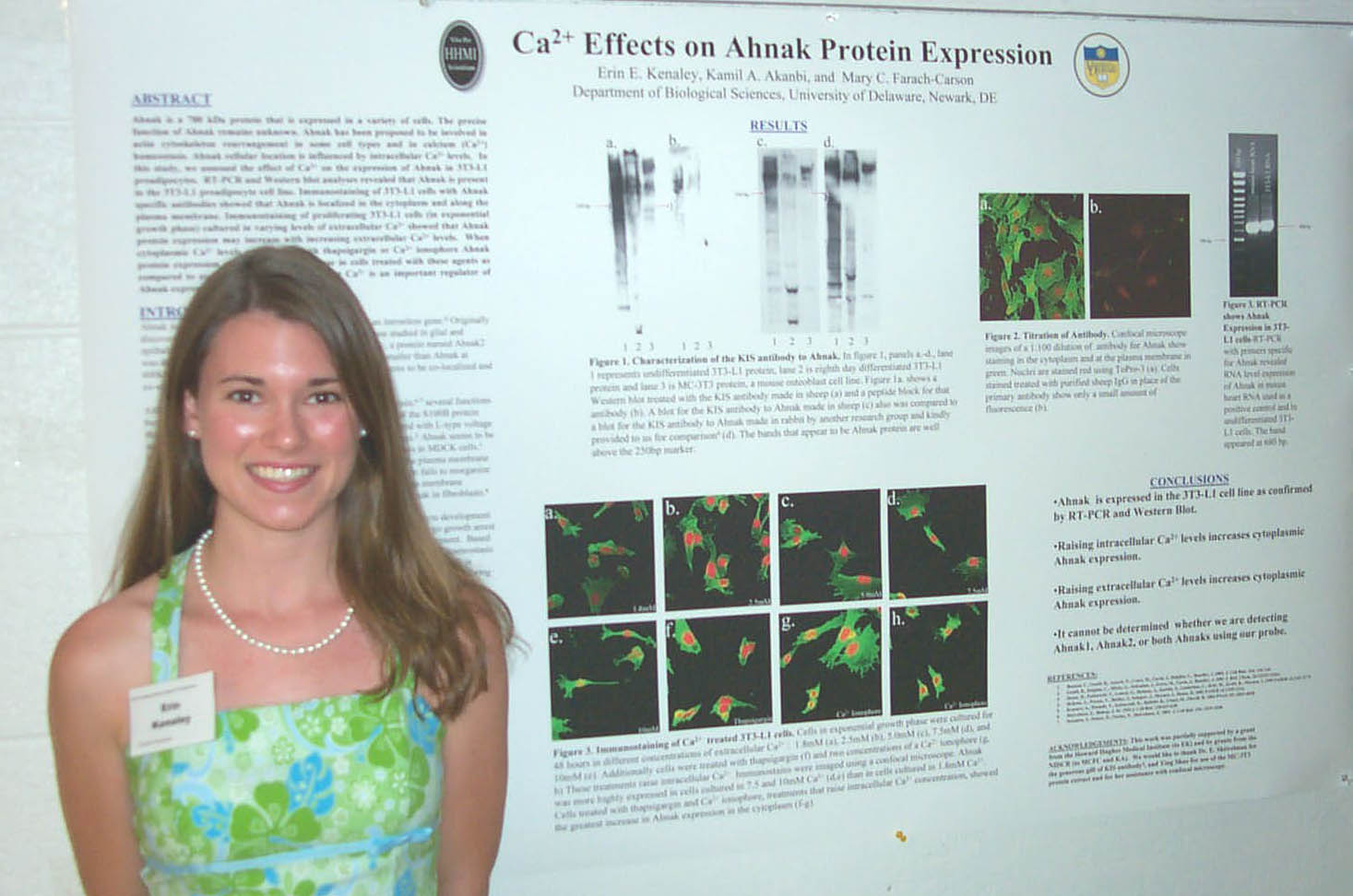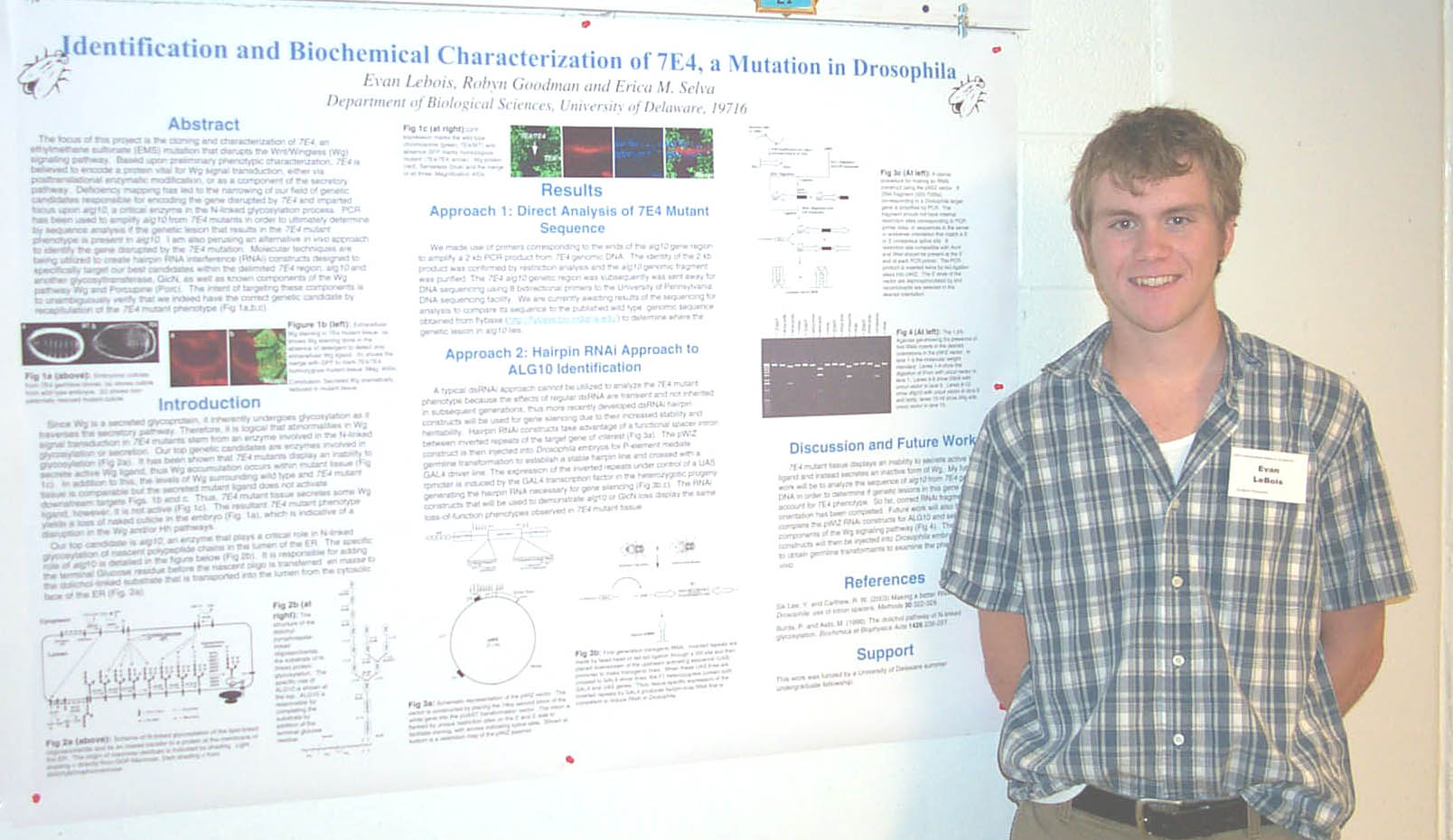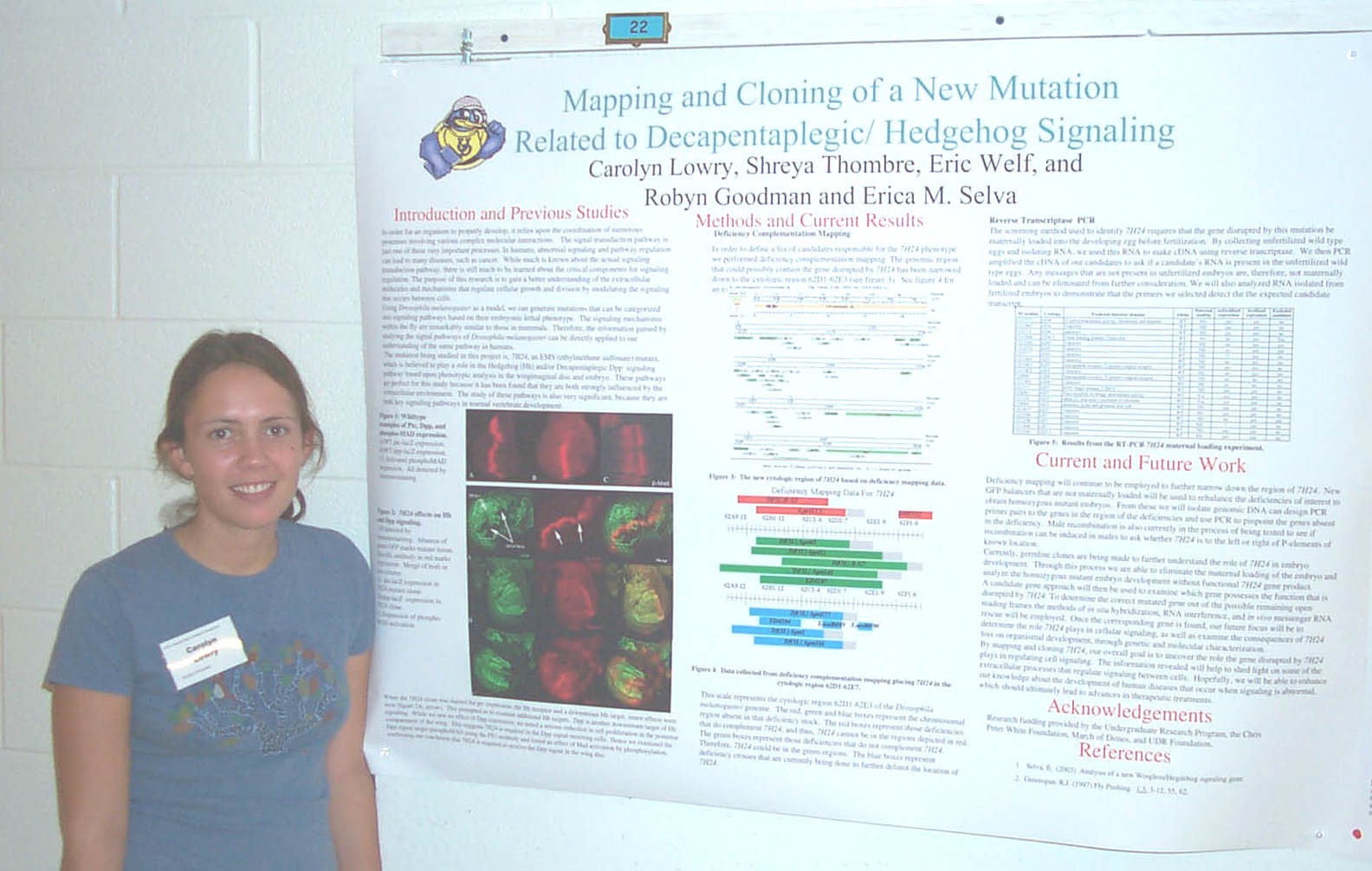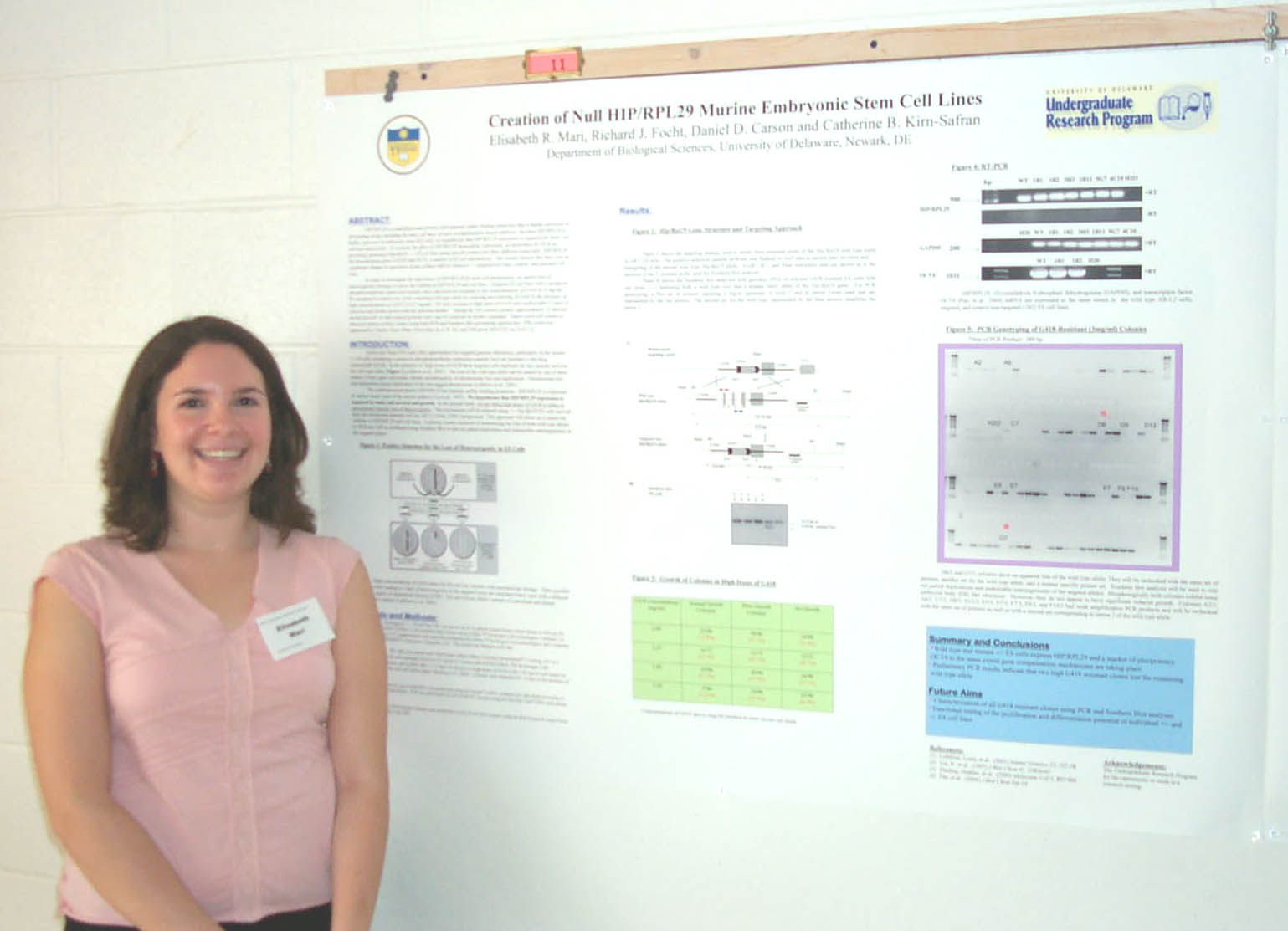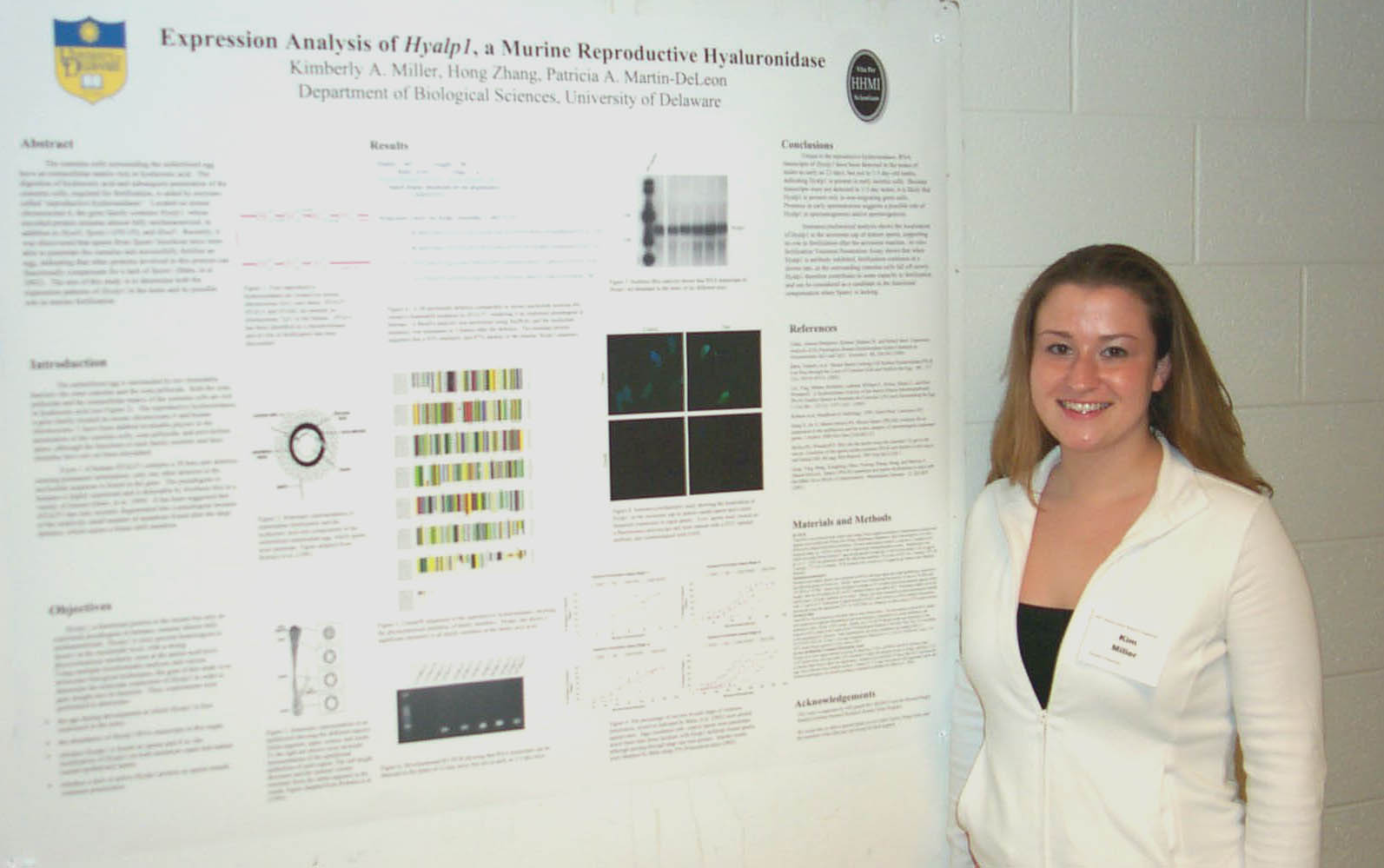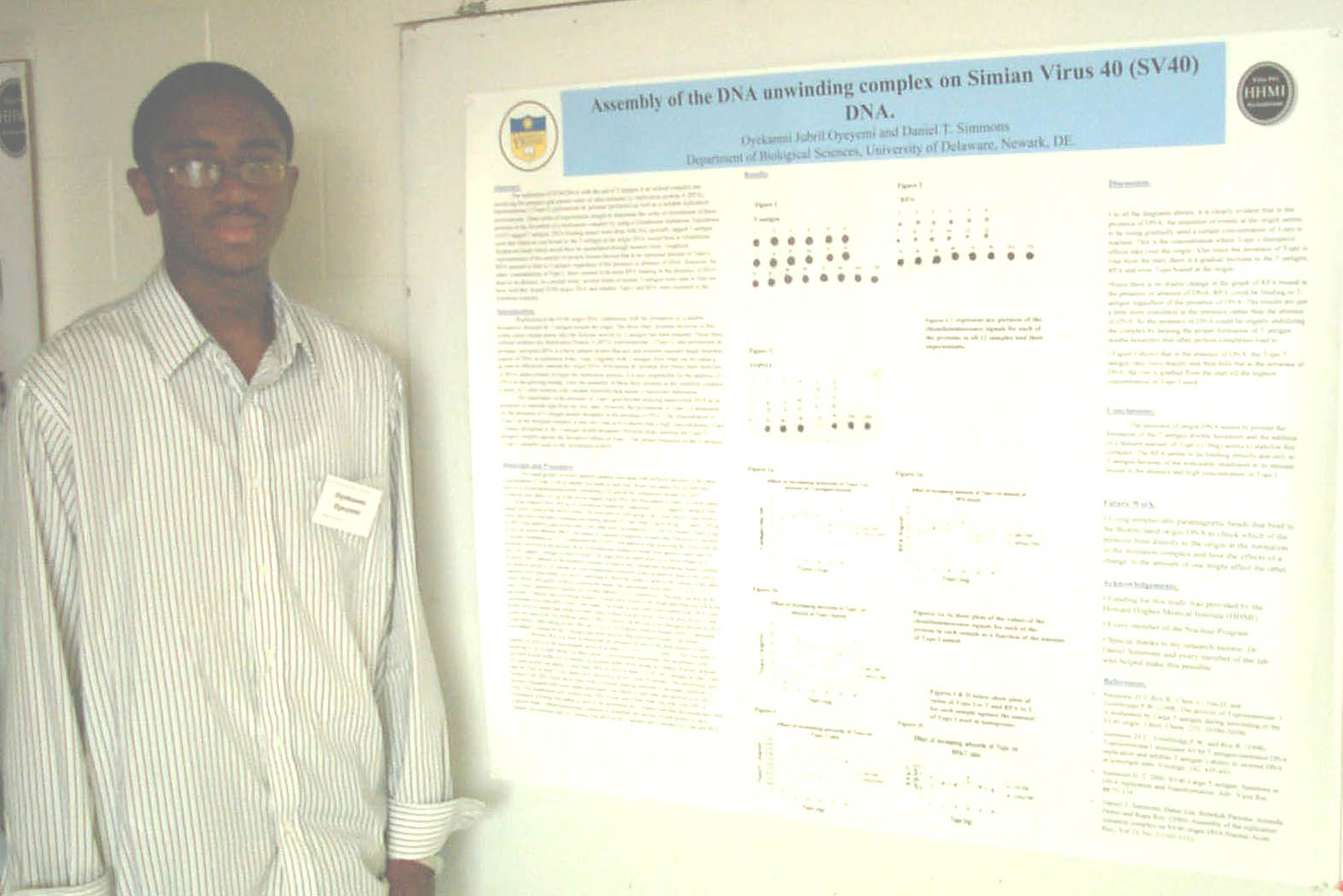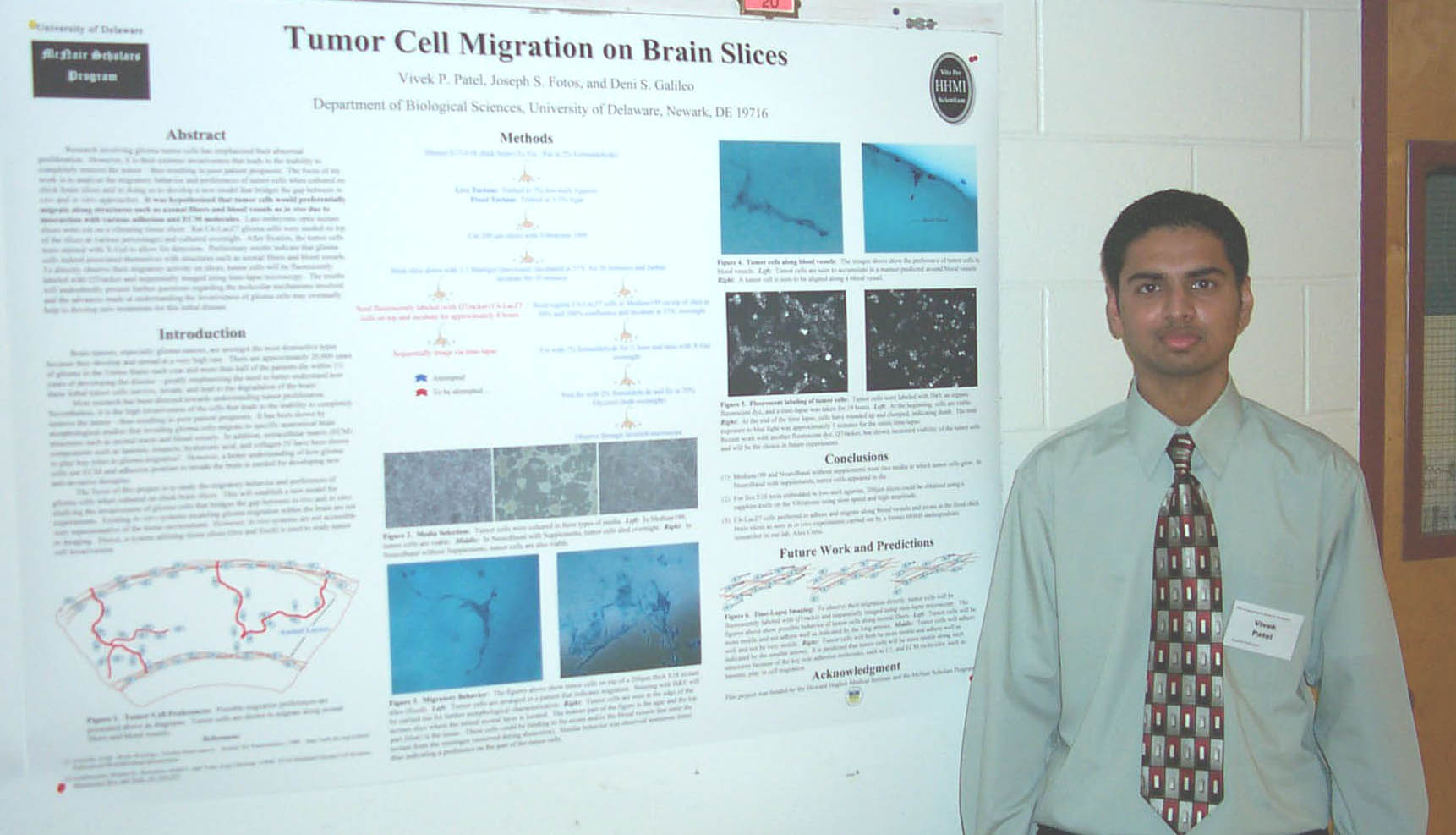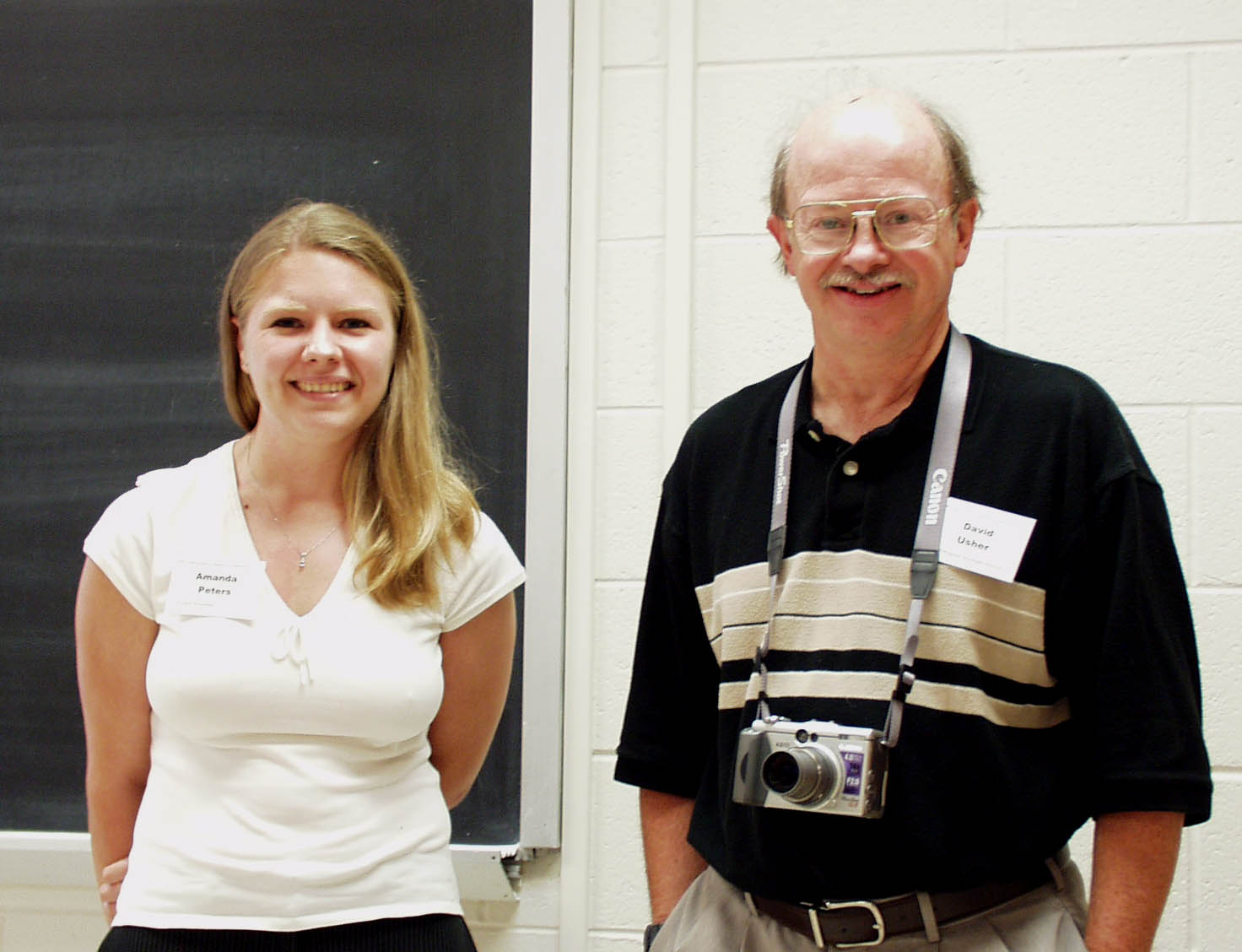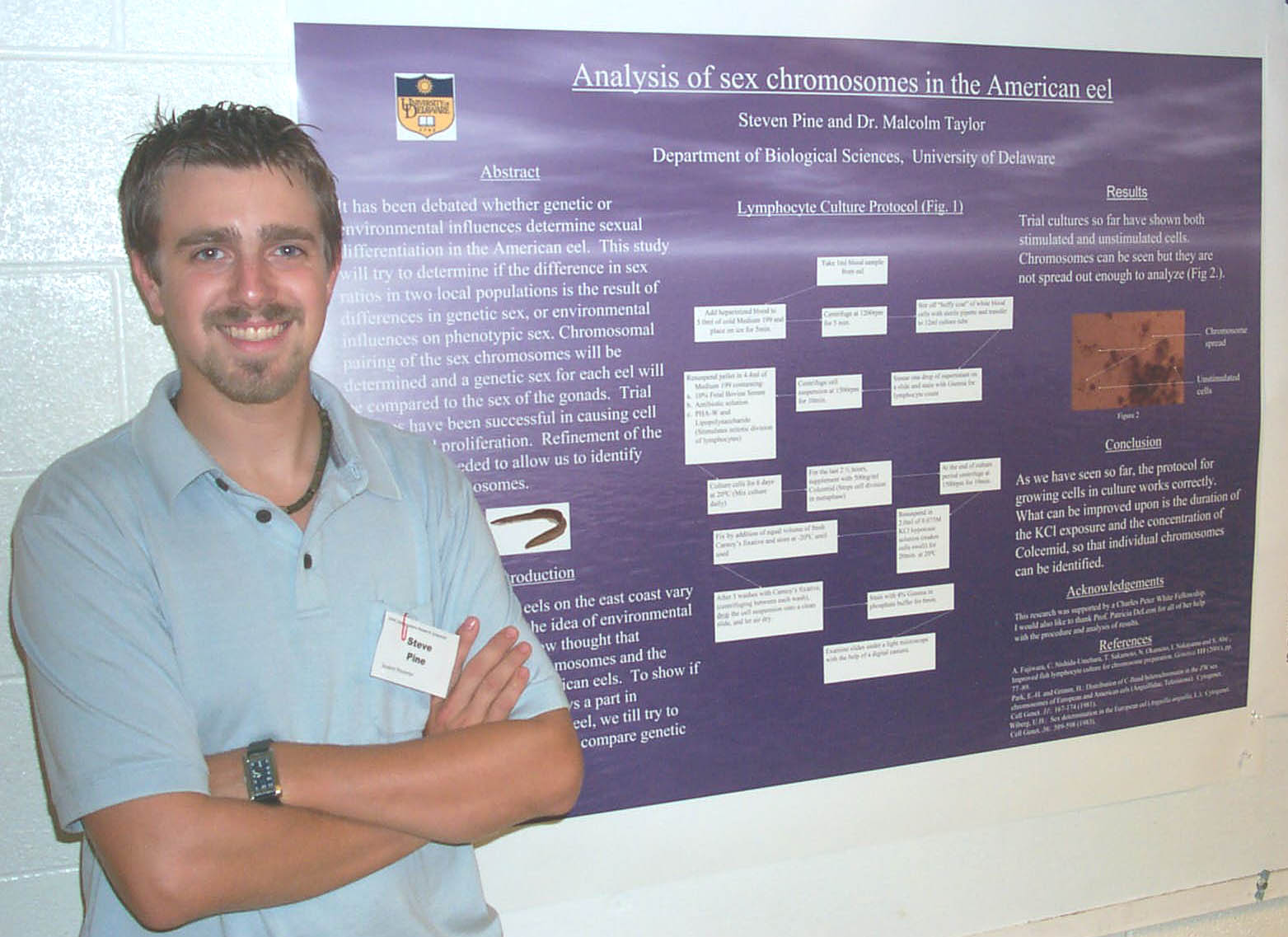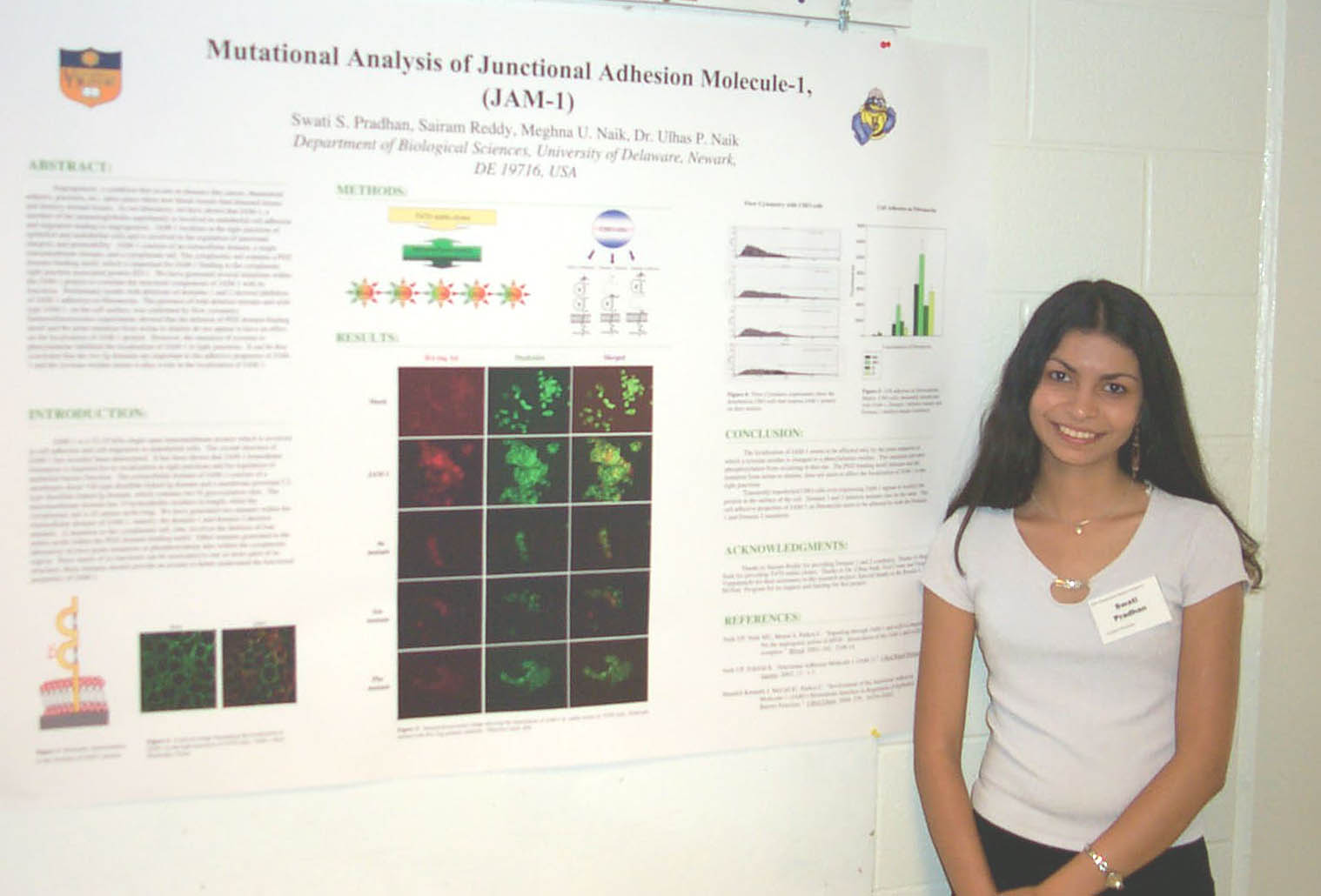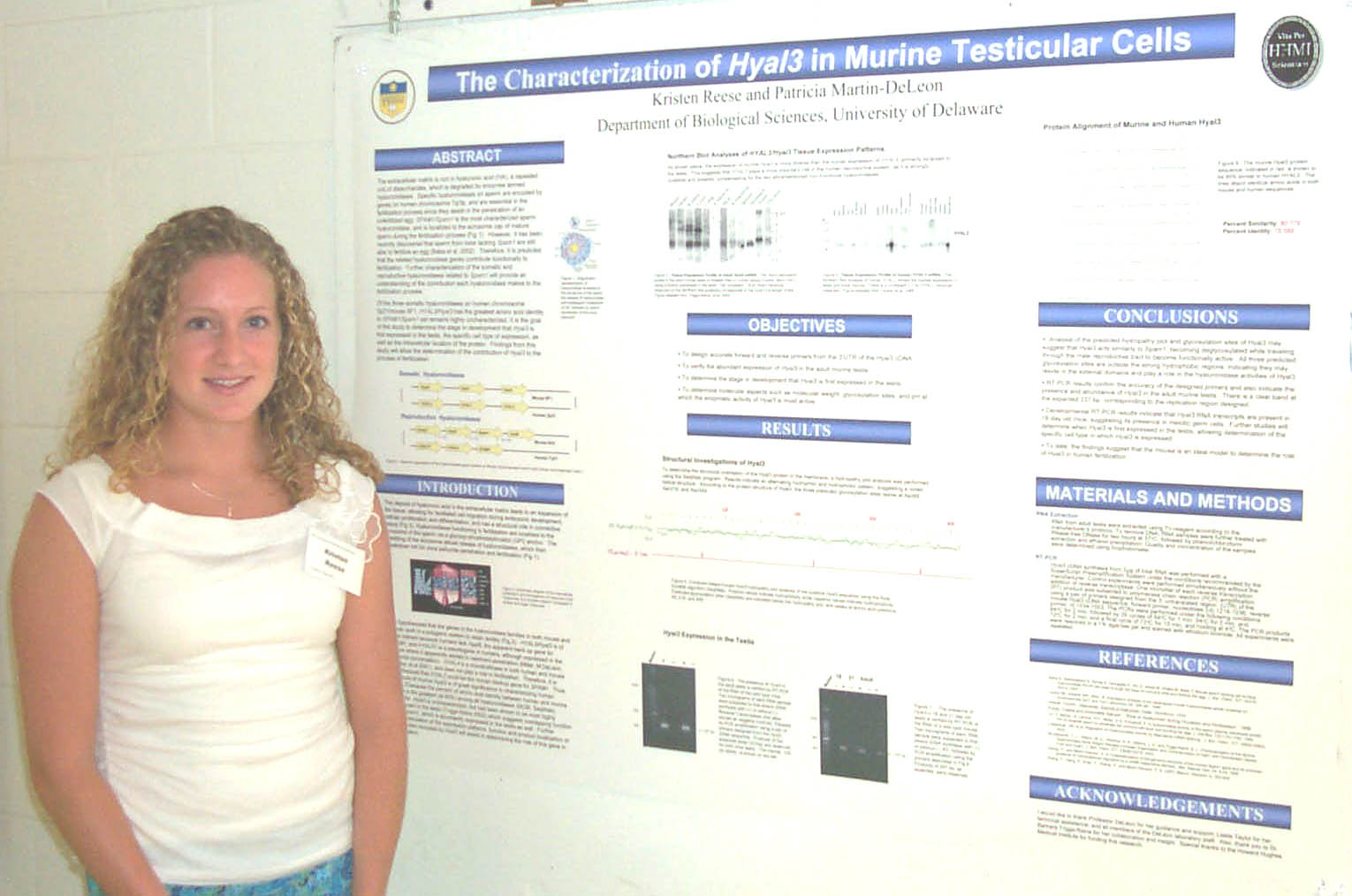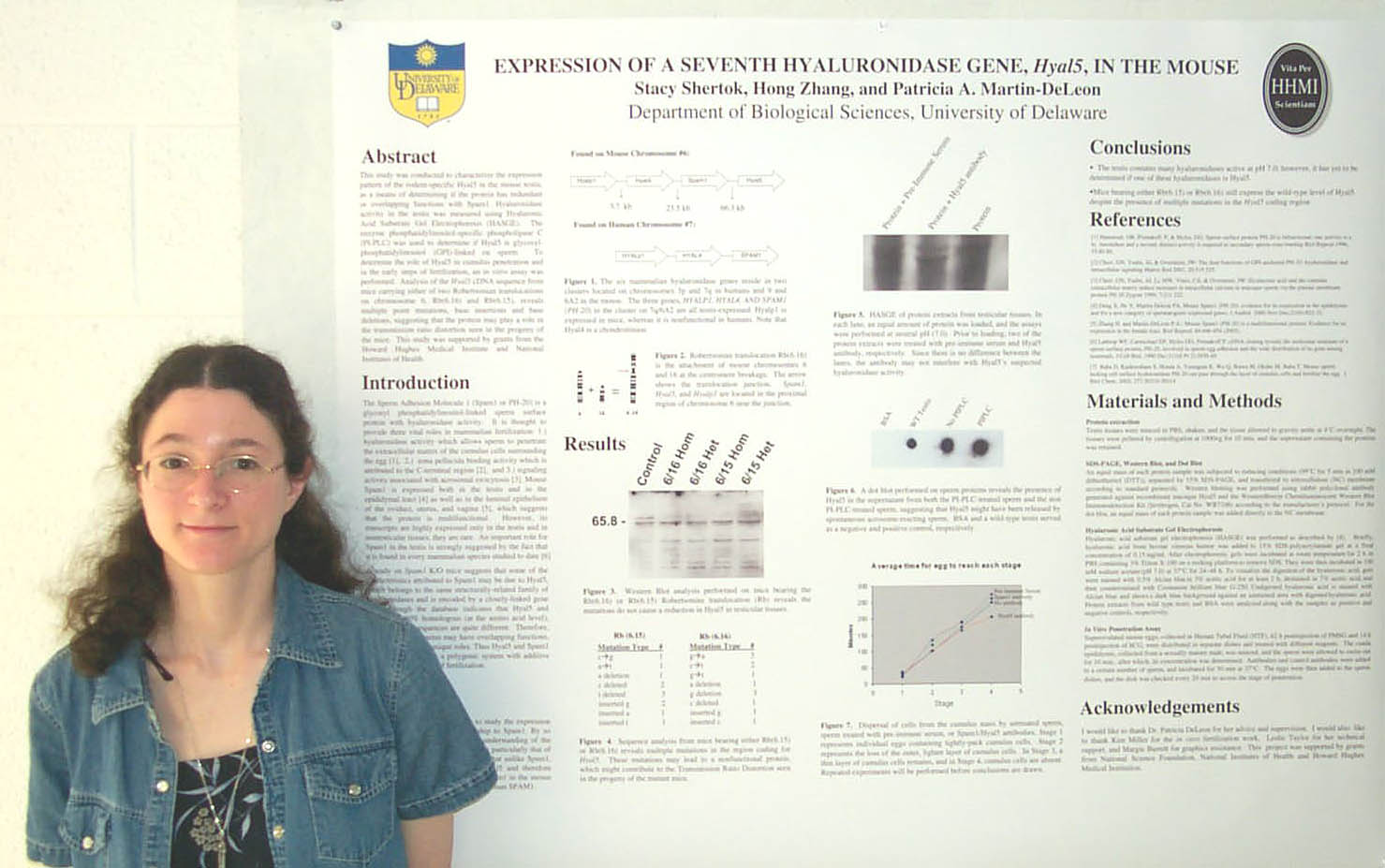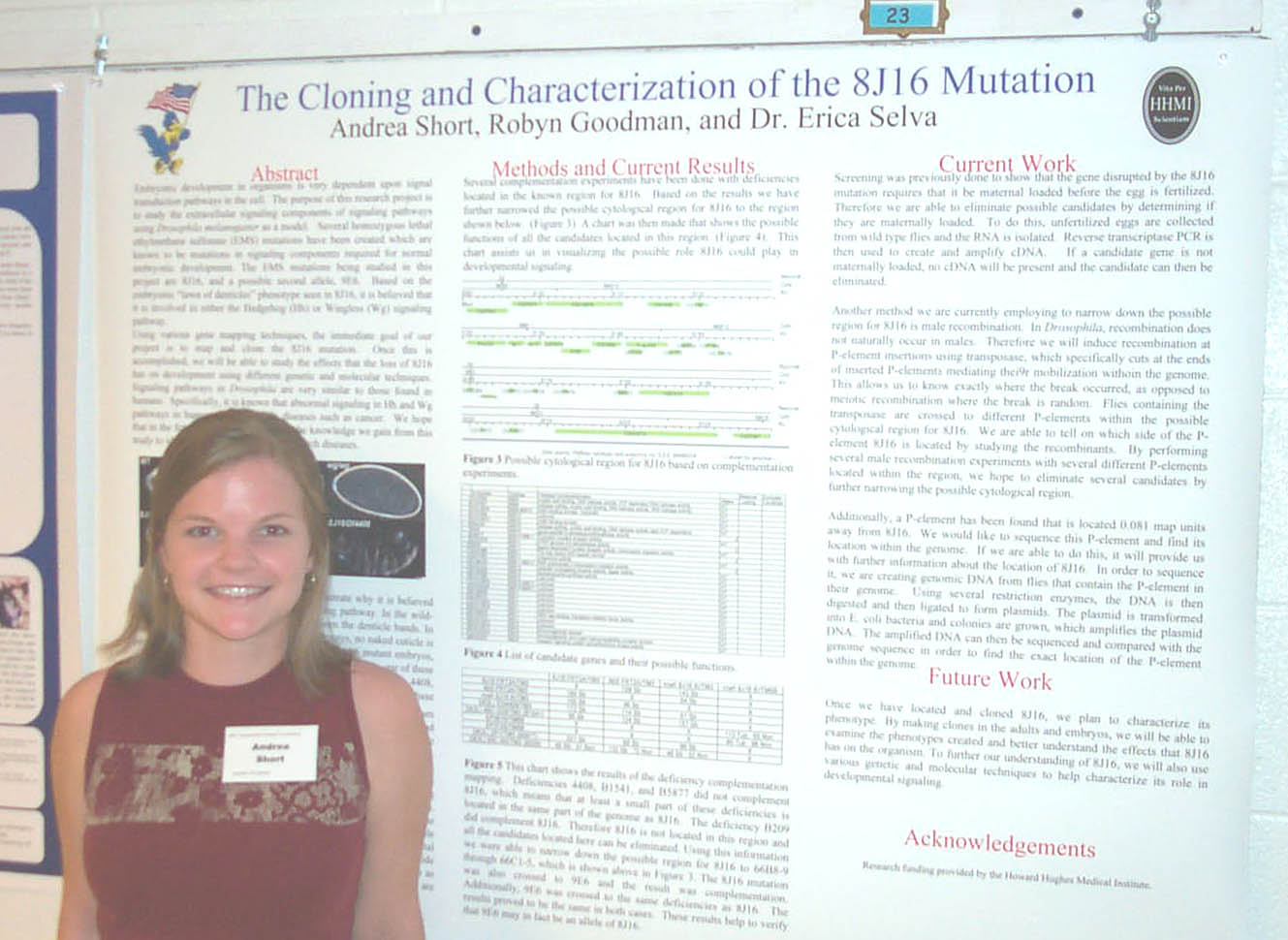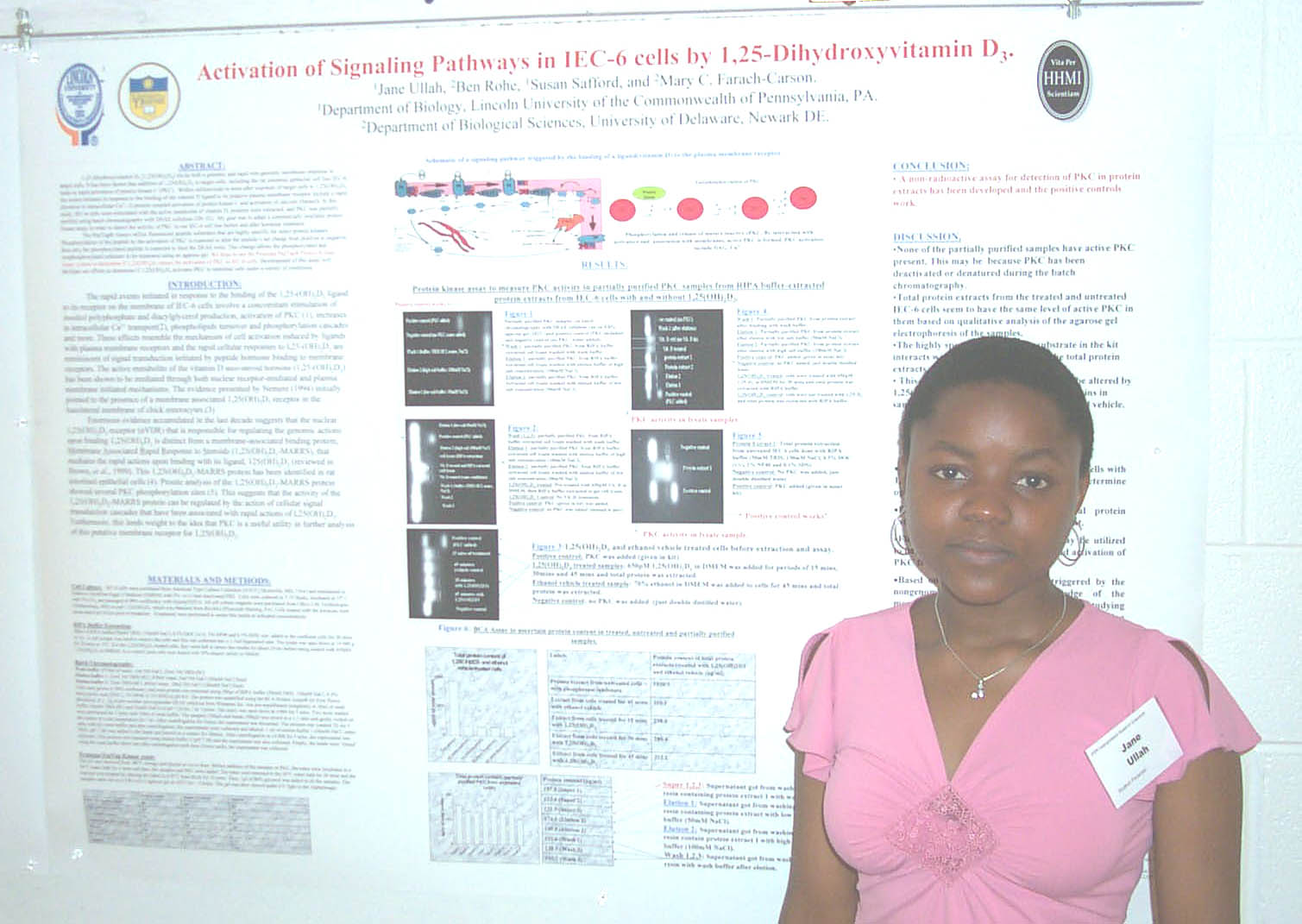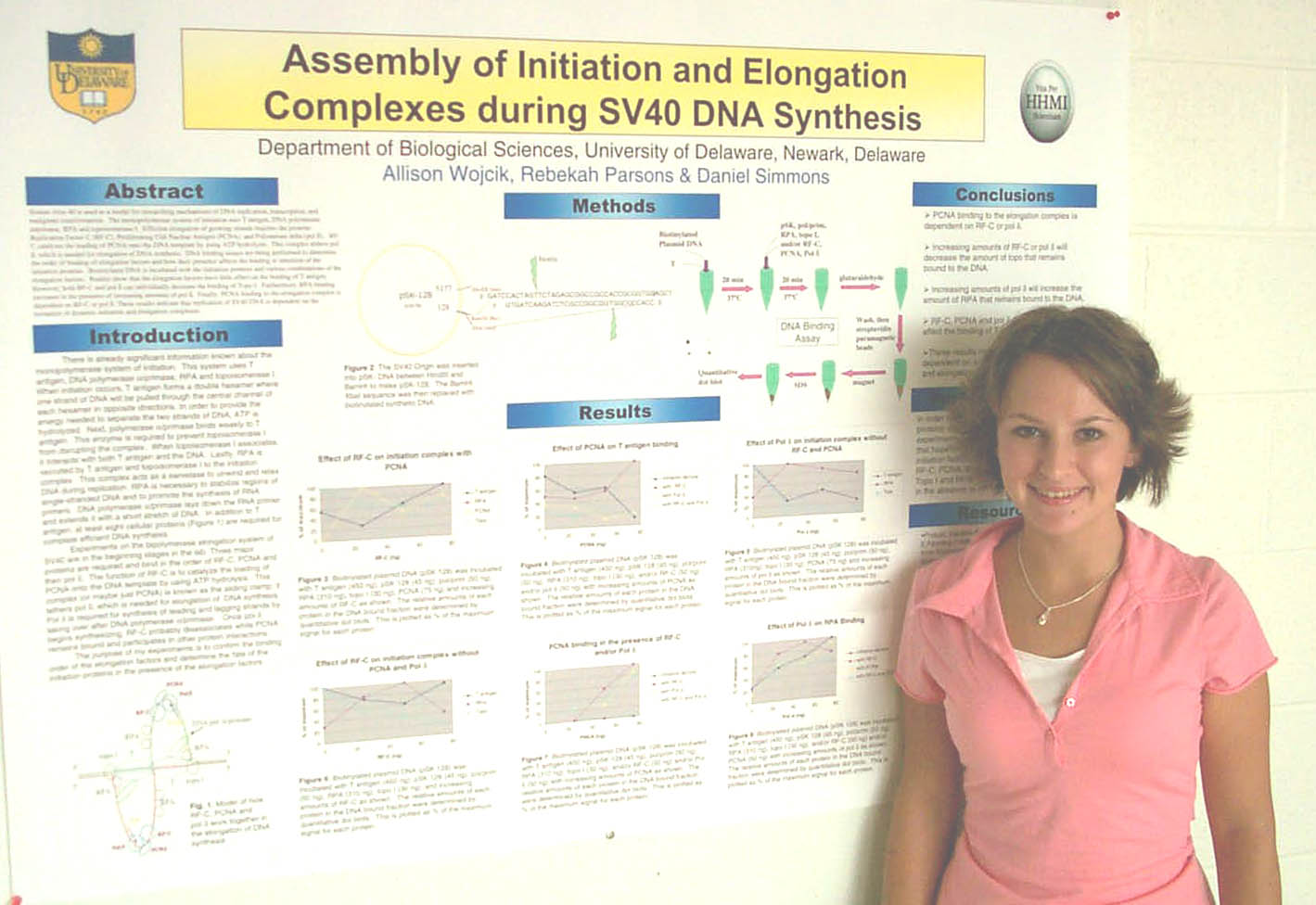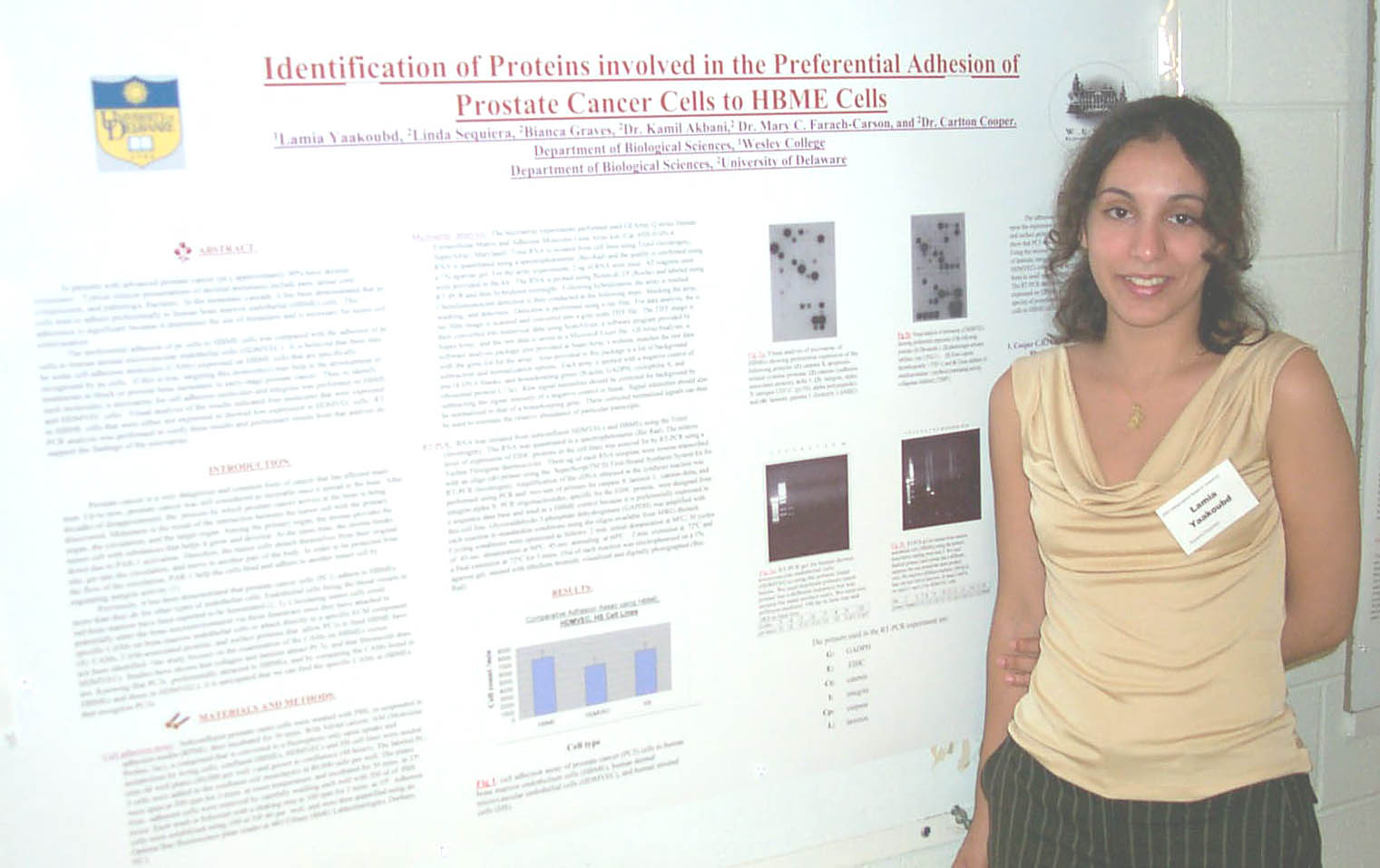|
The expression of
CD44 in bone marrow endothelial cells:
a target for bone metastasizing prostate cancer cells expressing hyaluronan. Michael Arienmughare1, Cliff Piondexter2, Linda Sequeria2, Robert A. Sikes2, George Dodge3, & Carlton R. Cooper2 1Department of Biology, Lincoln University, Lincoln, PA 2Department of Biological Sciences, University of Delaware, Newark, DE 3A. I Dupont Children Hospital, Wilmington, DE 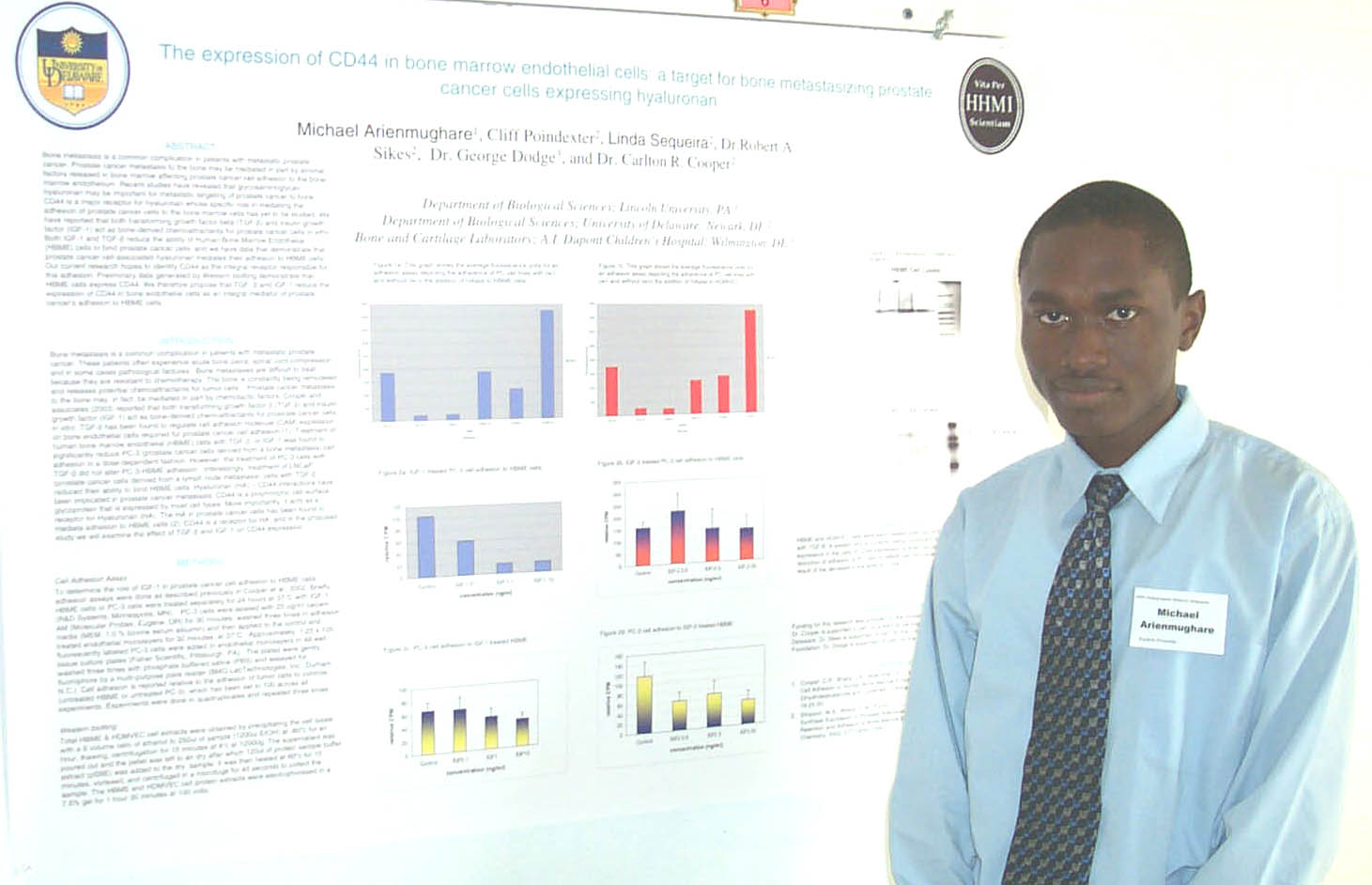
Bone metastasis is a common complication in patients with metastatic prostate cancer. Prostate cancer metastasis to the bone may be mediated in part by stromal factors released in bone marrow affecting prostate cancer cell adhesion to the bone-marrow endothelium. Recent studies have revealed that glycosaminoglycan hyaluronan may be important for metastatic targeting of prostate cancer to bone. CD44 is a major receptor for hyaluronan whose specific role in mediating the adhesion of prostate cancer cell to the bone-marrow cells has yet to be studied. We have reported that both transforming growth factor beta (TGF-β) and insulin growth factor (IGF-1) act as bone-derived chemoattractants for prostate cancer cells in vitro. Both IGF-1 and TGF-β reduce the ability of Human Bone Marrow Endothelial (HBME) cells to bind prostate cancer cells, and we have data that demonstrate that prostate cancer cell-associated hyaluronan mediates their adhesion to HBME cells. Our current research hopes to identify CD44 as the integral receptor responsible for this adhesion. Preliminary data generated by Western blotting demonstrate that HBME cells express CD44. We therefore propose that TGF- β and IGF-1 reduce the expression of CD44 in bone endothelial cells as an integral mediator of prostate cancer’s adhesion to HBME cells. Supported in part by the HHMI Program. |
